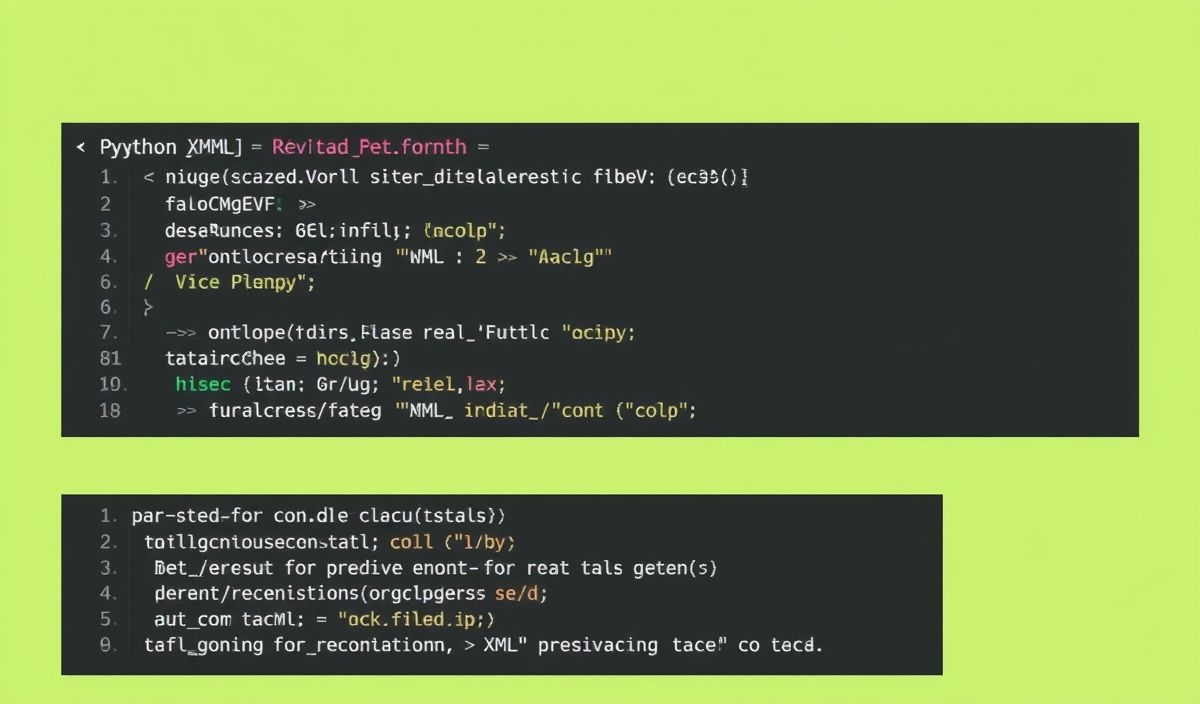Introduction to ElementTree
ElementTree is a powerful API provided by Python’s standard library for parsing, creating, and manipulating XML data. It is lightweight and straightforward, making it highly practical for many XML-related tasks.
Parsing XML Data
ElementTree provides simple ways to parse XML data from files and strings.
import xml.etree.ElementTree as ET
# Parsing from a file
tree = ET.parse('example.xml')
root = tree.getroot()
# Parsing from a string
xml_data = '''<root><child>data</child></root>'''
root = ET.fromstring(xml_data)
Creating XML Data
ElementTree also allows the creation of XML structures programmatically.
import xml.etree.ElementTree as ET
root = ET.Element('root')
child1 = ET.SubElement(root, 'child1')
child1.text = 'child1 data'
child2 = ET.SubElement(root, 'child2')
child2.set('attribute', 'value')
tree = ET.ElementTree(root)
tree.write('output.xml')
Finding Elements
Finding elements in an XML tree is made easy with ElementTree’s search methods.
import xml.etree.ElementTree as ET
tree = ET.parse('example.xml')
root = tree.getroot()
# Find a single element
first_child = root.find('child')
# Find all matching elements
all_children = root.findall('child')
# Find text within a specific element
for child in root.findall('child'):
print(child.text)
Modifying XML Data
ElementTree allows for modifying XML data either by changing text, attributes, or structure.
import xml.etree.ElementTree as ET
tree = ET.parse('example.xml')
root = tree.getroot()
for elem in root.iter('child'):
elem.text = 'new data'
elem.set('new_attribute', 'new_value')
tree.write('modified_example.xml')
Removing Elements
You can remove elements from an XML tree straightforwardly:
import xml.etree.ElementTree as ET
tree = ET.parse('example.xml')
root = tree.getroot()
for elem in root.findall('child'):
root.remove(elem)
tree.write('modified_example.xml')
Real-world Application Example
Consider an application that processes an XML configuration file to customize application settings. With ElementTree, we can easily parse, read, and update these configurations.
import xml.etree.ElementTree as ET
def read_config(file_path):
tree = ET.parse(file_path)
root = tree.getroot()
config = {}
for setting in root.findall('setting'):
name = setting.get('name')
value = setting.text
config[name] = value
return config
def update_config(file_path, name, value):
tree = ET.parse(file_path)
root = tree.getroot()
for setting in root.findall('setting'):
if setting.get('name') == name:
setting.text = value
tree.write(file_path)
# Example Usage
config = read_config('config.xml')
print(config)
update_config('config.xml', 'theme', 'dark')
In this example, the read_config function reads configuration settings from config.xml, and the update_config function updates a specific setting.
Hash: 36e9fcaed8fa9a93cda7dfeb5539a36ab5c21108f321436578d110e25f0911fe




